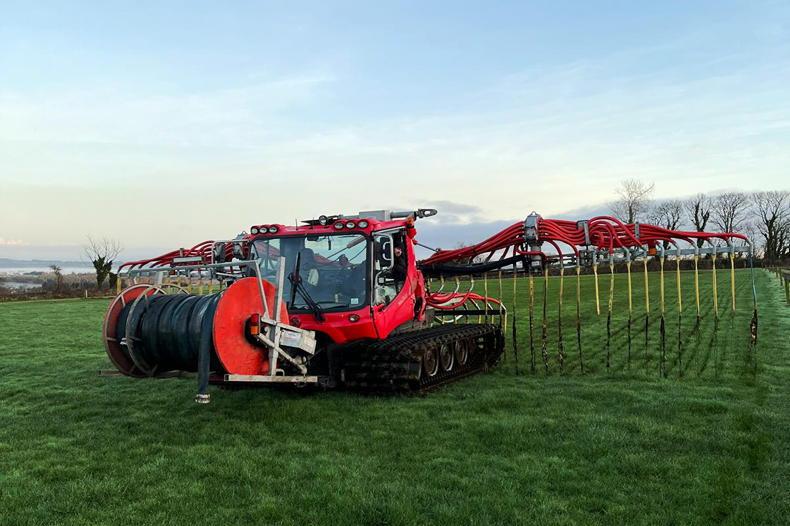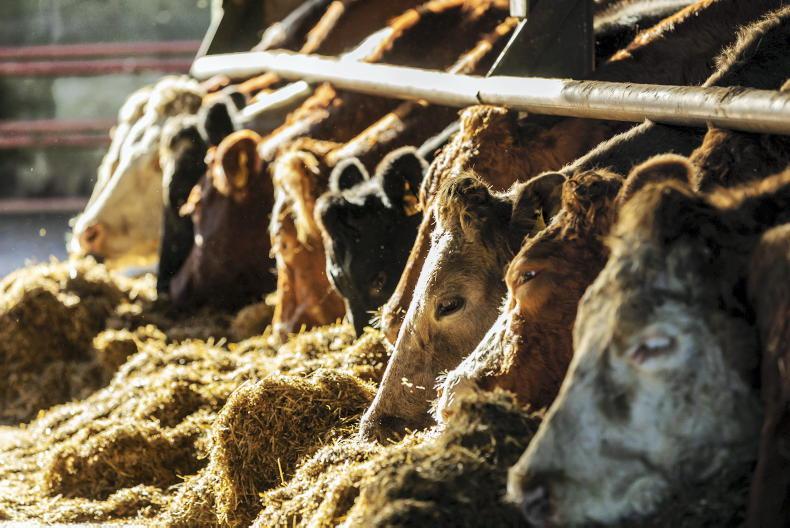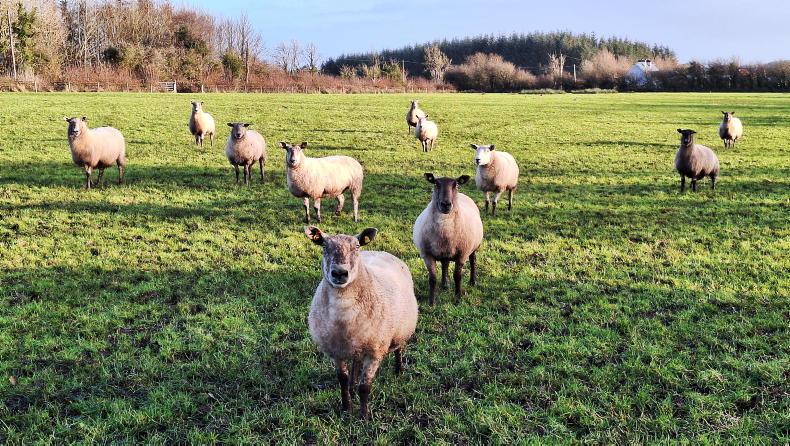Heavy rainfall over the weekend and earlier this week has led for sodden conditions underfoot for a lot of farms, with grazing conditions becoming increasingly difficult.
This is likely being exasperated by heavy covers of grass leading to longer residency periods in paddocks, with PastureBase figures showing the average pre-grazing yield of drystock farms to be sitting at just under 2,000kg DM/ha.
While building grass and grazing these heavy covers allow for stock to be held outside for a longer period, in wet weather conditions like we are seeing right now they can be a headache to graze out without causing significant damage.
Allocations should be kept small, with the aim being to whip covers off paddocks quickly and get out of them quickly.
Even at this, heavy covers can just be too tricky, so while these conditions persist, it might be worth heading for drier ground with lower covers on them to avoid excess damage or poor grass utilisation.
Grazing rotation length should now be at 35 days, with the poor conditions often meaning low dry matter in grass, and that stock being more unsettled in paddocks leading them to be moved on quicker.
When this happens, the rotation length can often be shortened when we are looking to lengthen it, so caution needs to be taken.
If conditions are seriously poor and a portion of cattle need to be housed, farmers should be aware that the mix of warm, wet weather and wet cattle going in to a shed can lead to the perfect conditions for pneumonia.
Ger McSweeney – Millstreet, Co Cork
Ground is holding up well considering we had 70mm of rain last week. Cattle are receiving the full run of the paddock but are still grazing it well. It may just take that extra half day to get it cleaned out properly.
Calves are creep grazing ahead of cows and receiving 1kg/head/day of concentrates in a trough. Empty cows and culls were weaned a month ago, with the bull calves to receive their second shot of Bovipast at the end of the month and then weaned a couple of weeks after.
Calves were weighed for the SCEP scheme, with bulls gaining 1.4kg/day and heifers 1.2kg/day since birth. I didn’t spread any fertiliser before the closing date as I had a good bank of grass built up.
System Suckler to beef
Soil Type Variable
Farm cover (kg/DM/ha) 1.073
Growth (kg/DM/ha/day) 38
Demand (kg/DM/ha/day) 35
Mark Maxwell – Ballinagore, Co Westmeath
Ground is getting very wet, with grass also starting to get tight. Cattle are getting through ground very quickly and we are struggling to hold the rotation length and get good graze outs with the poor conditions. Stock have been split into smaller bunches in an effort to limit damage.
Autumn calvers are being prioritised for the best grass. The spring calvers have been split in to two groups, with the plan being to wean these in the next week or two. These cows will also be scanned in the coming weeks.
Finished cattle are being drafted for slaughter as they are becoming fit, while we will likely start housing forward stores for finishing due to the high rainfall and depleting grass.
System Suckler to beef
Soil Type Variable
Farm cover (kg/DM/ha) 704
Growth (kg/DM/ha/day) 49
Demand (kg/DM/ha/day) 43
Shaun Diver – Tullamore Farm, Co Offaly
We spread 30 units/acre of protected urea on 25ac last week. The remaining slurry will be spread in the next week on the drier paddocks that were recently grazed.
We drafted 107 lambs, which should help reduce the demand for grass on the run up to breeding for the ewes. The group are roughly 50:50 ram lambs and ewe lambs, with the ewe lambs finished off grass and the ram lambs on 400g/head/day concentrates.
Ewes are being prepped for breeding, with footbathing and bolusing being done. Consistently lame ewes not responding to treatment will be culled.
Cows were scanned on Thursday. Empty cows will be weaned and housed for finishing to reduce demand.
System Suckler to beef
Soil Type Variable
Farm cover (kg/DM/ha) 1,150
Growth (kg/DM/ha/day) 55
Demand (kg/DM/ha/day) 35










SHARING OPTIONS